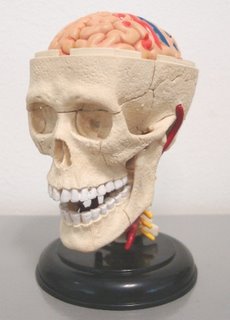 Just a couple of weeks back I found a drawer full of old audio cassettes containing pop songs from the 1980's and early 90's.
Just a couple of weeks back I found a drawer full of old audio cassettes containing pop songs from the 1980's and early 90's.I was thinking of recording some of this music into MP3 format, since the magnetic tapes in these cassettes have been deteriorating so badly. One inconvenience of living in the tropics is that fungi tends to grow on all sorts of stuff.
For some reason they really like to eat magnetic media and optical surfaces. Video cassettes have it the worst - they are usually unreadable after only one year. We didn't have one of those expensive dry cabinets so some of our cassette tapes have endured the humid environment for decades.
As I was saying, I wanted to find out how many of these tapes are still readable, so I went out to buy a new cassette player (these are nearly extinct nowadays amidst the truckloads of MP3/MP4 players) and took a listen.
Sure enough, the newer cassettes were still fine, but the condition of 20-year-old tapes was much less consistent.
Some were only readable for a few songs, and the rest sounded muffled. Others were a scratchy mess throughout. Most of these old tapes clogged up my player's magnetic head with rust and fungal gunk after a few songs. All of them showed their age.
In contrast, all the CDs I bought still sound like new, including my first CD - the "Empire Strikes Back" soundtrack - which is 15 years old.
Ah, the wonders of digital technology!
Wait. That suddenly makes me think of something.
Fresh Brainz is proud to bring you the simplest explanation of cancer in the blogosphere - using audio cassettes as an illustrative analogy!* (see footnote).
Imagine you have an audio tape full of your favourite songs.

Magnetic tape is similar to a DNA molecule in a number of ways:
1. They require physical contact to be read and copied.
2. The analog copying process is imperfect and successive copying will lead to information alteration or loss.
3. They are both subject to wear and tear over time.
4. They have two anti-parallel streams of information. In DNA these two streams are complementary, whereas in an audio tape they usually encode two different streams (Side A and Side B).
Let's assume that you have recorded the same set of songs on both sides of the tape.
You love those songs so you play them everyday.
Now for the challenge...
How would you make your songs last 20 years?

Well, you could maintain the original cassette as carefully as you can.
Unfortunately, you need to use it everyday, so the tape is subject to constant wear and tear. Environmental effects like background magnetism, humidity or static electricity will also degrade the signal.
Thus, you will need to check the cassette regularly to see if your songs still sound the same. Luckily you have the same songs on both sides, so any one problem is unlikely to happen to the same part of the both songs. You can use an audio editing machine to copy an intact song on one side and overwrite the damaged song on the other side.
This situation also occurs in living cells. DNA repair mechanisms use one strand as the template to repair the other.
Unfortunately, this is a lot of work that takes up time and energy. Constant editing and overwriting makes your cassette age quickly. Similarly, continuous DNA repair work is exhausting for individuals cells and they grow old fast.
Moreover, the rest of the cassette is growing old anyway. The case can crack, tape can get torn off the spools - you might even accidentally drop the whole thing into a river one day.
It isn't safe to put all your eggs into the same old, rusty basket.

So, why not make copies of the original cassette? Before it gets worn out, transfer the music to a fresh new cassette. Simply repeat this cycle and voila! You will have songs that remain forever new.
This will work for digital files, but unfortunately for audio tapes and genomes, the copying process (replication) is not perfect. Analog tape duplication introduces artefacts such as reduced signal intensity, increased noise, wow, flutter and others. Similarly, DNA replication (using polymerases) has an error rate of at least one base pair per million, usually more.
The result: successive copying adds more and more errors to the songs. In a cassette tape the final product is poor quality music; in the DNA of a living cell, the replication error may end up in critical parts of the genome (shown as red sections in the diagram) that causes the cell to divide uncontrollably.
Which leads to cancer.
However, constant cell division is necessary to keep the multicellular organism young. Even if a cassette tape gets destroyed (shown as a red "X") the music still survives. Thus there is tug of war going on between DNA repair and replication.
If I must summarise the opposing forces that a cell must manage into a single statement (yes, it is an oversimplification), it would be:
Young and Restless -vs - Stable and Dying
A cell would rather be young and restless, because it doesn't mind the replication errors that turns it into a super reproductive machine. It hates spending excess energy on DNA repair, because that makes it old and grey. Cells are good at dividing and lousy at dying - this must necessarily be true, otherwise we wouldn't be around.
However, with the exception of certain cell types (such as reproductive cells), the entire organism would rather its cells be stable and dying, because an aggressively spreading tumour will destroy the whole system much faster than the slow ageing process.
I think it is curious that complex multicellular organisms contain a number of such features that are beneficial but yet destructive at the same time.
Living systems can be functionally superb, but no existing species can possibly be perfect because, why, perfection tends to take a long long long time.
Would you like to know more?
- Prof. Jarle Breivik (University of Oslo, Norway) has an informative homepage and a link to an easy-to-read Scientific American article about evolution and cancer.
*Footnote
I made up these definitions a while ago. Illustration by analogy is always inaccurate, but due to its simplicity and clarity, it is still a popular communication tool today.
Explanatory Analogy - This type of analogy so closely parallels the problem of interest that it can provide explanations and predict results. For example, some Gedanken experiments in Physics use explanatory analogies.
Illustrative Analogy - This type of analogy is similar to the problem of interest in only a few ways and is simply used to provide a clearer mental picture for communication purposes.






0 Comments:
Post a Comment